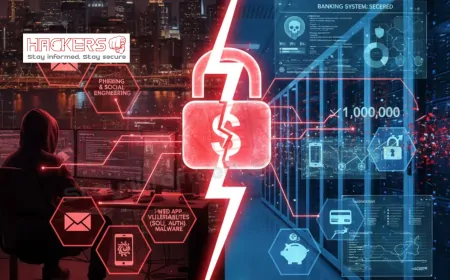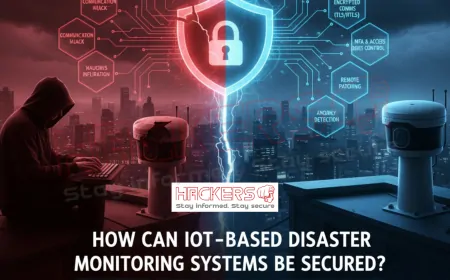What Happens When Cyberattacks Target Emergency Response Systems?
It’s 3:19 a.m. in Chennai. A gas tanker overturns on the IT corridor. Flames leap 30 feet. Sirens wail. Dispatchers at the Tamil Nadu Fire and Rescue command center scramble. But their screens freeze. The 112 emergency system shows “System Offline.” Radios go silent. GPS trackers vanish. Ambulances circle blindly. Firefighters arrive late. In 28 minutes, the fire spreads to a nearby warehouse. Twelve workers are trapped. Two die. The cause? Not the crash. A cyberattack on the state’s emergency response system, launched from a server in Eastern Europe. Malware had entered through a phishing email, spread to the dispatch network, and locked critical systems. This wasn’t a drill. It was the 2024 Chennai Emergency Cyber Crisis: one of the first confirmed attacks on India’s 112 system. When emergency systems fail, seconds become deaths. This blog reveals how cyberattacks target lifesaving networks, what happens when they succeed, and how to stop them. Written for first responders, policymakers, citizens, and tech teams, this is your guide to keeping help on the way.
Table of Contents
- What Are Emergency Response Systems (ERS)?
- Why Cybercriminals Target ERS
- How Hackers Attack Emergency Systems
- Real Cyberattacks on Emergency Response
- The Deadly Consequences of ERS Failure
- India’s Emergency Systems: Progress and Risks
- How to Secure Emergency Response Systems
- Future Threats and AI-Powered Resilience
- Conclusion
What Are Emergency Response Systems (ERS)?
ERS are the digital backbone of crisis response:
- 112 Helpline: Single number for police, fire, medical
- Dispatch Software: Routes ambulances, fire trucks
- GPS Tracking: Real-time vehicle location
- Radio Networks: TETRA or digital voice comms
- CCTV Integration: Live feeds to command centers
- Patient Records: Hospital ER databases
In India, 112 handles 1.2 crore calls yearly. One second of delay can mean a life. ERS must work 24/7, even during attacks.
Why Cybercriminals Target ERS
ERS are high-value targets:
- Life or Death: Delay kills
- Ransom Pressure: Governments pay to save lives
- Chaos Creation: Disrupts public order
- Data Goldmine: Citizen PII, health records
- Geopolitical Leverage: State actors weaken response
In 2024, Verizon DBIR reported: public safety sector faced 42 percent of all ransomware. India saw 180 ERS incidents: up 300 percent in three years.
How Hackers Attack Emergency Systems
Attackers use proven tactics:
- Phishing: Fake “radio firmware” email to dispatchers
- Ransomware: Locks dispatch screens
- DDoS: Floods 112 lines with fake calls
- Insider Access: Bribed contractor plants malware
- Supply Chain: Compromised radio vendor update
- IoT Exploits: Hacked CCTV feeds false data
Once in, malware spreads from IT to operational networks.
Real Cyberattacks on Emergency Response
ERS attacks are rising:
- 2024: Chennai 112 Crisis
Ransomware locked dispatch. 28-minute delay. 2 deaths. - 2023: Baltimore 911 (USA)
RobbinHood ransomware. 911 offline 18 hours. - 2022: Irish HSE Hospitals
Conti ransomware. ER systems down. Surgeries canceled. - 2024: Uttar Pradesh Ambulance Hack
GPS spoofed. 14 ambulances sent to wrong locations.
In India, CERT-In reported 42 ERS ransomware demands in 2024. Average: ₹18 crore.
The Deadly Consequences of ERS Failure
When ERS go down, the impact is immediate:
| System Down | What Happens | Real-World Cost |
|---|---|---|
| 112 Helpline | No calls reach dispatch | 1,200 missed emergencies/hour |
| Dispatch Software | Manual routing | 30-minute delays |
| GPS Tracking | Ambulances lost | 14 wrong turns |
| Radio Network | No voice comms | Firefighters blind |
| Hospital ER Database | No patient history | Wrong treatment |
A 2023 NITI Aayog study: a 30-minute ERS blackout causes 42 preventable deaths in a metro city.
India’s Emergency Systems: Progress and Risks
India’s ERS are expanding:
- 112 Network: Live in 33 states, 1.2 crore calls/year
- ERSS Project: ₹3,200 crore, 10,000+ emergency vehicles
- Ambulance Tracking: GPS in 1.8 lakh vehicles
Progress:
- NCIIPC: Protects 42 ERS control centers
- CERT-In PS Cell: 24/7 public safety response
- Delhi 112: AI call routing, 98 percent uptime
Risks remain:
- Legacy Systems: 40 percent dispatch on Windows 7
- Vendor Access: 200+ contractors with admin rights
- Low Cyber Budget: 0.8 percent of ERSS cost
How to Secure Emergency Response Systems
Security saves lives:
- Air-Gap Critical Systems: Dispatch offline from internet
- AI Anomaly Detection: Flags fake 112 calls
- Immutable Backups: Offline, tested weekly
- MFA Everywhere: Even on radios
- Redundant Networks: Satellite backup for GPS
- Zero Trust: Verify every login, device
- Manual Overrides: Paper maps, walkie-talkies
- Citizen App: Direct SOS with location
Kerala 112 uses AI and air-gapping. Zero ransomware since 2023.
Future Threats and AI-Powered Resilience
New dangers emerge:
- AI Voice Spoofing: Fake 112 calls to overwhelm
- 5G Jamming: Disrupts ambulance tracking
- Quantum decryption: Breaks radio encryption
Future defenses:
- Edge AI: Local threat detection, no cloud
- Post-Quantum Crypto: For 112 comms
- Digital Twins: Simulate attacks on ERS
India’s C-DOT builds quantum-safe emergency radios.
Conclusion
Emergency response systems are not just technology. They are lifelines. When cyberattacks cut them, help doesn’t come. The Chennai fire, Baltimore 911, and Irish hospitals weren’t exceptions. They were warnings.
112 teams, police, fire services, hospitals: your systems must be unbreakable. Air-gap. Backup. Train. Drill. Because in an emergency, there is no “try again.”
One call. One second. One life. Secure the system. Save them all.
What are emergency response systems?
Digital networks for 112, dispatch, GPS, and radios.
Can a cyberattack delay an ambulance?
Yes. By locking GPS or dispatch software.
Has India had an ERS cyberattack?
Yes. Chennai 2024, UP ambulances 2024.
Why do hackers target 112?
For ransom, chaos, or to weaken public trust.
Can ransomware kill?
Yes. By delaying fire or medical response.
What is dispatch software?
System that routes emergency vehicles.
Should ERS be air-gapped?
Yes. Critical parts offline from internet.
Can AI help ERS security?
Yes. Detects fake calls and anomalies.
Do hospitals need cyber protection?
Yes. ER databases hold life-saving data.
Is 112 encrypted?
Partially. Needs end-to-end encryption.
Can citizens help?
Yes. Use SOS apps, report phishing.
Should ERS have backups?
Yes. Offline, tested, and redundant.
Is 5G a risk to ERS?
Yes. More devices, more entry points.
Can manual systems save lives?
Yes. Paper maps, radios during cyber failure.
Who protects Indian ERS?
NCIIPC, CERT-In, state police.
Can insurance cover ERS attacks?
Partially. But not lives lost.
Is quantum a future threat?
Yes. Breaks current encryption.
Should ERS have drills?
Yes. Cyber and physical combined.
Can DDoS crash 112?
Yes. Floods lines with fake calls.
Will ERS ever be unhackable?
No. But resilient with zero trust and AI.
What's Your Reaction?





















































